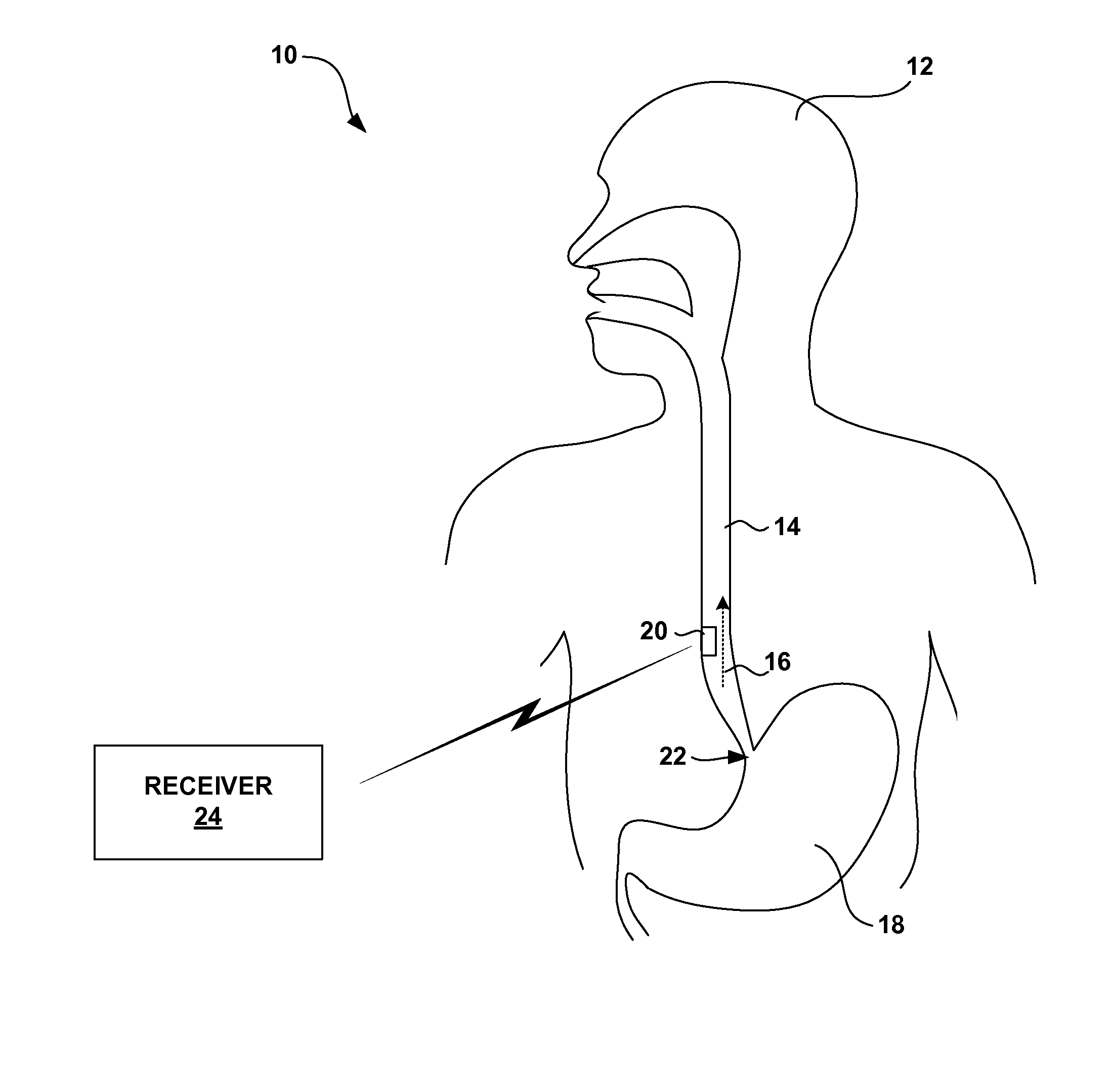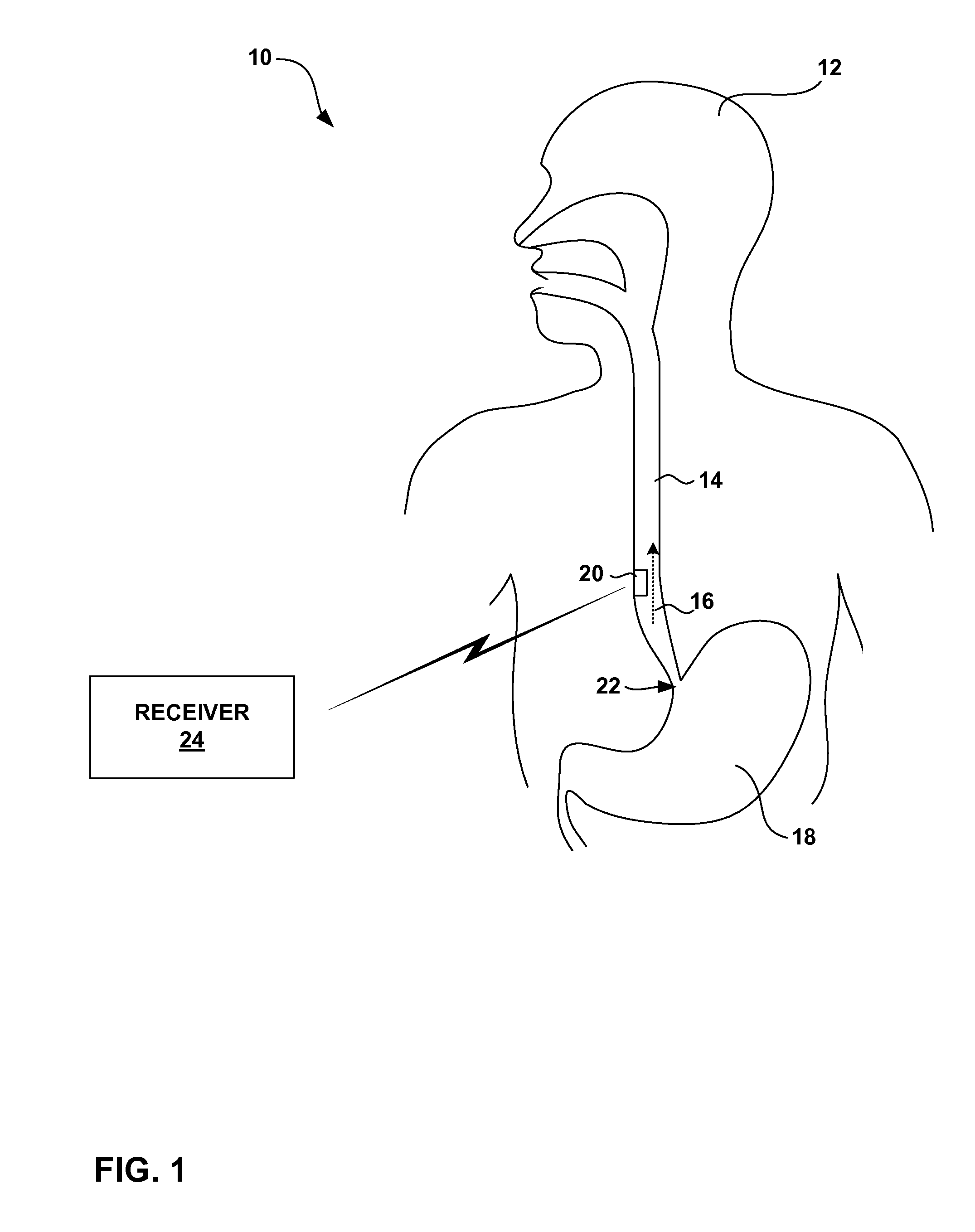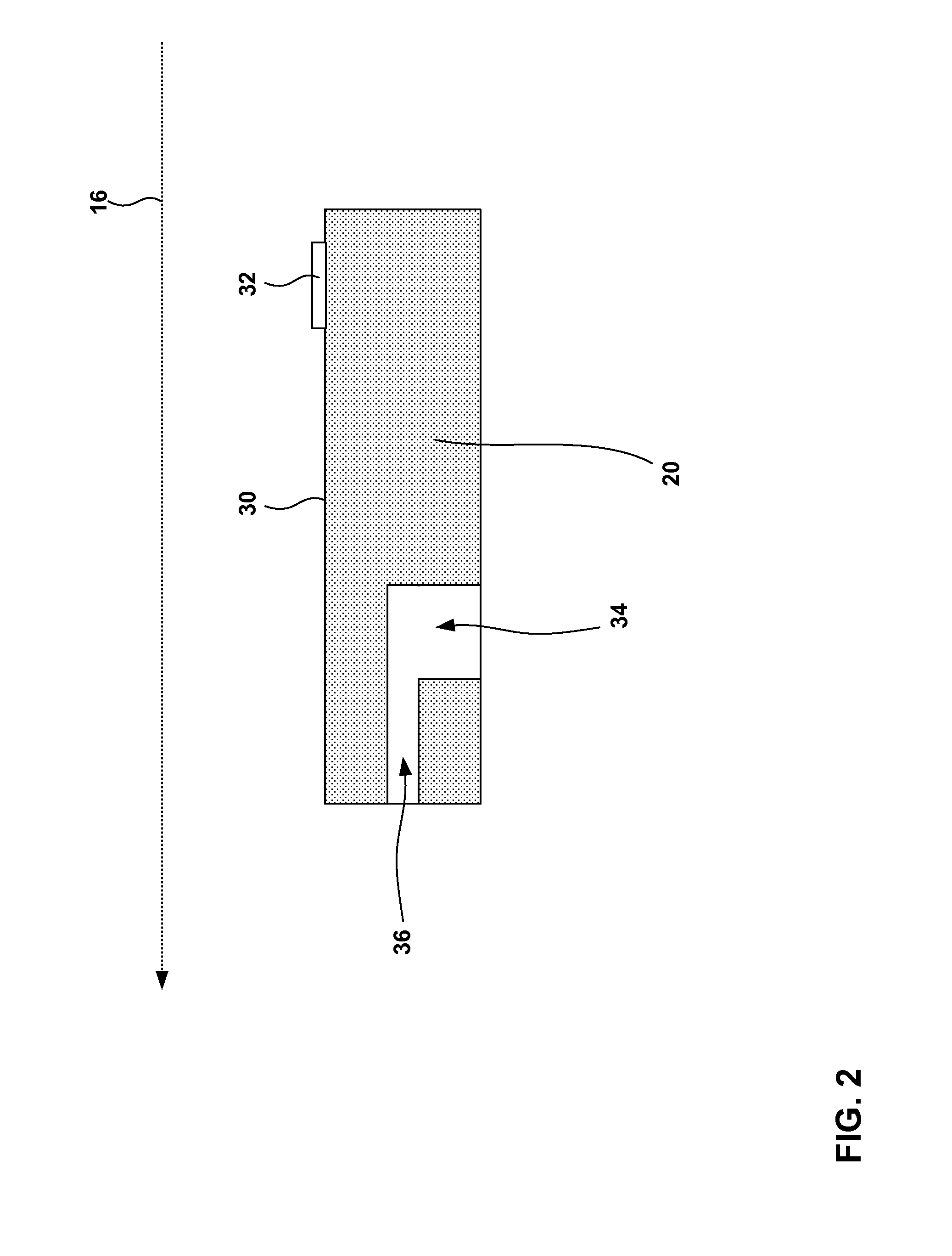Monitoring fluid flow in the gastrointestinal tract
a technology of gastrointestinal tract and monitoring device, which is applied in the direction of person identification, catheter, application, etc., can solve the problems of inability to reliably diagnose gerd in particular situations, secondary effects that are not apparent, detectable or present, and patients may experience significant discomfort and additional damage to the mucosal lining of the esophagus, so as to achieve more reliable diagnosis of gerd
- Summary
- Abstract
- Description
- Claims
- Application Information
AI Technical Summary
Benefits of technology
Problems solved by technology
Method used
Image
Examples
Embodiment Construction
[0024]FIG. 1 is a schematic diagram illustrating a gastrointestinal fluid flow monitoring system 10 shown in conjunction with a patient 12. In the illustrated embodiment, fluid flow monitoring system 10 monitors the flow of fluid within the lower portion of an esophagus 14 of patient 12. More specifically, fluid flow monitoring system 10 monitors the flow of fluid in the reflux direction, indicated by arrow 16, from a stomach 18 of patient 12 into the lower portion of esophagus 14. Monitoring the reflux flow of fluid from stomach 18 into the lower portion of esophagus 14 allows a clinician to more accurately diagnose Gastroesophageal Reflux Disease (GERD).
[0025] System 10 includes a monitor 20 positioned within esophagus 14 near the lower esophageal sphincter (LES) 22 of patient 12, i.e., where esophagus 14 meets stomach 18. As described above, LES 22 normally relaxes to allow food to enter into stomach 18 from esophagus 14. LES 22 then contracts to prevent stomach acids from enter...
PUM
 Login to View More
Login to View More Abstract
Description
Claims
Application Information
 Login to View More
Login to View More - R&D
- Intellectual Property
- Life Sciences
- Materials
- Tech Scout
- Unparalleled Data Quality
- Higher Quality Content
- 60% Fewer Hallucinations
Browse by: Latest US Patents, China's latest patents, Technical Efficacy Thesaurus, Application Domain, Technology Topic, Popular Technical Reports.
© 2025 PatSnap. All rights reserved.Legal|Privacy policy|Modern Slavery Act Transparency Statement|Sitemap|About US| Contact US: help@patsnap.com



